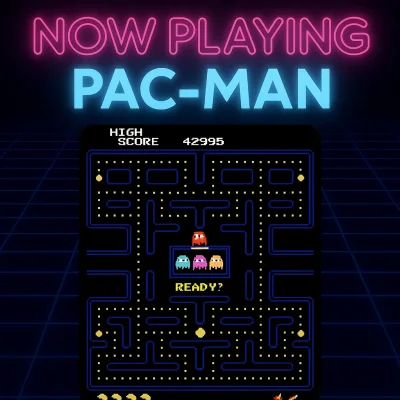Pete
Mr. Eighties
- Apr 29, 2023
- 13,851
- 559
Platform: Arcade
Developer: Namco
Publisher: Midway
Step into the maze, eat every dot, and outsmart the ghosts. Pac-Man was invented in 1980 and became one of the most iconic arcade characters of all time. Released by Namco and licensed in North America by Midway, this game introduced a new style of play that appealed to a wider audience beyond the typical space shooter crowd.
Your mission? Clear each level by collecting all the dots while avoiding Blinky, Pinky, Inky, and Clyde. With power pellets to turn the tables, quick reflexes, and pattern memorization, Pac-Man was easy to pick up but incredibly hard to master. The arcade machine featured bright colors, catchy sound effects, and unique artwork that made it stand out in any room.
Pac-Man arcade game machines quickly appeared everywhere from pizza shops and corner stores to malls and movie theaters. Later versions included the Pac-Man Galaga arcade game, table arcade formats, and releases for home consoles like the Atari 2600, Atari 7800, and NES. Many players wondered how many levels were in NES Pac-Man, but the original arcade version remained the ultimate challenge.
Fun fact: Pac-Man was the first video game to break into global mainstream culture. It inspired a Saturday morning cartoon, lunchboxes, a chart-topping pop song, and even its own 30th anniversary edition years later. Despite the rise of newer games, this one remains a cornerstone of arcade history.











